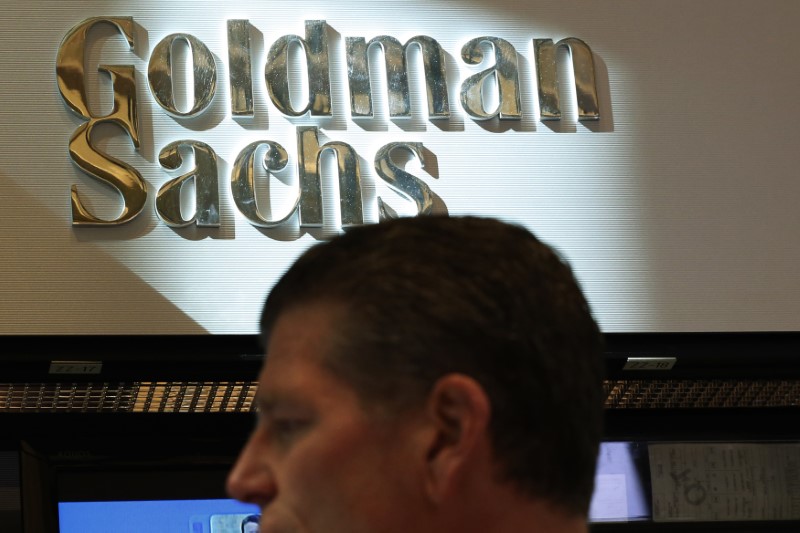(Bloomberg Opinion) -- In markets, a theme can often become the overwhelming consensus. When that happens, traders feel two conflicting urges at the same time. The first is to say the majority is wrong and stake a contrarian position. The other is to wonder whether maybe everyone is onto something.
This captures the current struggle for investors in the U.S. high-yield and leveraged loan markets. The consensus opinion is perhaps best stated by this Bloomberg News headline from last week: “Leveraged Loan Buyers Are Running for Cover as Fear Ramps Up.” Simply put, money managers are flocking into debt with higher credit ratings because they’re worried about how riskier securities will hold up if economic growth slows and their weak investor protections are put to the test. Already, big price moves are roiling certain pockets of the credit markets with greater frequency. That’s pushed the gap between prices on single-B and double-B rated leveraged loans, as well as the spread between triple-C and double-B junk bond yields, to the widest levels since mid-2016.
As if to add fuel to the fire, S&P Global Ratings released a report late last week with the title “Weakest Links Reach a 10-Year High.” S&P defines weakest links as issuers rated B- or lower with negative outlooks or on its CreditWatch with negative implications. There were 263 of them globally in September, the most since November 2009. “The default rate of weakest links is nearly eight times greater” than the broad junk-bond market, analysts Nicole Serino and Sudeep Kash wrote. “The rise in the weakest links tally may signify higher default rates ahead.”
This report is catnip for those who believe the high-yield consensus. The longest economic expansion in U.S. history has effectively stamped out default risk except around the edges of the bond market. Notably, even with all these weakest links, S&P still says its base case is for the U.S. default rate to reach 3.4% by mid-2020 — hardly an apocalypse. But if there’s even a chance that corporate failures exceed estimates, bondholders aren’t the types to stick around and risk it. At least not until the securities get too cheap to pass up.
Goldman Sachs (NYSE:GS) Asset Management is one of the few contrarians suggesting the market might already be at that point. “We are starting to find opportunities where we are willing to go down in quality,” Ashish Shah, the firm’s co-chief investment officer of fixed income, said last week. “We think the market is being too bearish on the economy.” In Shah’s view, investors may be hesitant to make risky bets in the final months of 2019 but will get aggressive in the new year.
Obviously, Shah isn’t endorsing all low-rated bonds. No credit investor will ever recommend a rating category or an industry broadly. But even just the suggestion of picking and choosing among the riskiest junk debt goes against the grain. Time will prove this stance either mad or brilliant.
It’s a tricky call. By Shah’s own thought process, buying riskier junk bonds now might be getting in too early if most investors are going to clean up their portfolios heading into the end of the year. Traders are all-too-familiar with the pain from December 2018, for one, which was the high-yield market’s worst month in three years.
On the other hand, the Federal Reserve isn’t tightening monetary policy as it was at the end of last year. Rather, policy makers have cut interest rates twice since July and look poised to do it again on Oct. 30. Those actions are all in the name of sustaining the economic expansion, which should bolster lower-rated companies. Dallas Fed President Robert Kaplan even noted last week that, in hindsight, the criticism of the December 2018 rate increase was fair.
Now, interest-rate cuts are far from a guarantee that the economy can keep chugging along. Oaktree Capital Group LLC’s co-founder, Howard Marks, for one, is skeptical that the Fed can hold off an eventual recession. He said last week that his firm, one of the world’s largest distressed-debt investors, has gradually been putting more emphasis on safety in credit, though he’s still comfortable holding single-B rated obligations that his analysts have vetted. “Ratings don’t tell you whether something is safe or not,” he said.
Money managers will always criticize ratings companies. But now credit raters are also flagging that a growing number of companies are at risk of deteriorating. The S&P report, for instance, shows the U.S. has 177 “weakest links,” compared with the five-year average of 138 and the 10-year average of 114. That ought to concern those who believe that credit-rating companies, on average, tend to hand out grades that are too high. Morgan Stanley (NYSE:MS) strategists, for instance, used similar language to S&P in a report that concluded “beneath the veneer of relative spread resilience and muted realized defaults, the weak links in the leveraged credit markets are coming under pressure.”
At the same time, markets have fallen for the end-of-cycle head fake time and again. Fed Vice Chair Richard Clarida, in remarks last week before the central bank’s blackout period, said that the global economy is “muddling through” and that the situation isn’t dire. That seems like a fair assessment. In those kinds of conditions, the riskiest junk bonds can largely find a way to scrape by as well.
That kind of flimsy assurance doesn’t cut it anymore for a number of high-yield investors. Until (or unless) more of them join Goldman Sachs Asset Management in wading back into the risky end of the market, the dominant up-in-quality consensus looks unstoppable.
